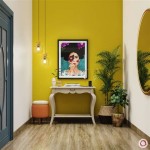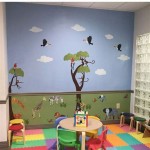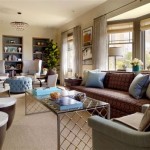DIY Decorations for Your Room: Enhancing Aesthetics and Personalization
The decorating of a personal living space is a significant undertaking, playing a crucial role in fostering comfort, inspiration, and a reflection of individual style. Commercially available décor options often present limitations in terms of personalization, cost, and alignment with specific aesthetic preferences, but individuals can leverage the power of do-it-yourself (DIY) projects to overcome these obstacles. DIY room decorations provide a compelling avenue for transforming a space into a unique and inviting haven, while simultaneously offering cost-effectiveness and the opportunity to cultivate a sense of accomplishment. Implementing these projects can range from simple enhancements to more involved creative endeavors, catering to a wide array of skill levels and resource availability.
The benefits of crafting personalized room décor are multifaceted, extending beyond mere aesthetics. Engaging in DIY projects can be a therapeutic and stress-relieving activity, fostering a sense of mindfulness and allowing creative expression. This process also affords the opportunity to upcycle or repurpose existing materials, contributing to sustainability and reducing environmental impact. Furthermore, DIY projects can be adapted and tailored to suit specific needs and preferences, ensuring that the finished products are genuinely representative of the resident's individual style and functional requirements. This approach contrasts with the limitations often present in mass-produced items, which may lack the personalized touch and adaptability desired by many.
Wall Art and Decorative Accents
One of the most impactful ways to personalize a room is through wall art. Utilizing diverse methods allows for a wide spectrum of aesthetic results. Canvas paintings, for instance, can be created with acrylics, watercolors, or even mixed media techniques. Simple geometric patterns or abstract compositions can be particularly appealing, adding visual interest to the space. Another option involves creating photo collages, combining personal pictures and mementos to adorn a wall. These can be arranged in various formats – framed individually, or grouped together on a corkboard or a dedicated wire grid system. Furthermore, homemade wall hangings, using materials like macramé rope, yarn, or fabric scraps, add a unique textural element to the room. The selection and arrangement of wall art play a substantial part in defining the atmosphere of the space; careful consideration should be given to color palettes, styles, and the overall theme of the room.
Decorative accents, such as handmade vases, candleholders, or small sculptures, offer opportunities to inject personality into a room. These can be crafted from an array of materials, including clay, glass, wood, or recycled items. For example, old glass bottles can be transformed into stylish vases with the addition of paint or decorative twine. Simple wooden blocks can be painted and arranged as decorative objects, creating a minimalist aesthetic. Furthermore, the art of origami can be used to craft delicate paper flowers or other decorative shapes, adding a touch of elegance to shelves or desks. The inclusion of these items can significantly enhance the overall visual appeal of the space, providing visual interest and contributing to a well-curated look. The goal is to select accents that complement the overall aesthetic and reflect the individual's preferences.
Textiles and Soft Furnishings
Textiles and soft furnishings contribute greatly to the comfort and aesthetic appeal of any room. Creating custom throw pillows, blankets, or curtains allows for precise matching of colors and patterns to the existing décor. Materials can be sourced from a wide variety of places; fabric remnants, old clothing, and even repurposed bedsheets can be used to create unique and cost-effective textiles. Hand-stitched or machine-sewn projects provide an intimate and personal touch to the space. Furthermore, creating a patchwork quilt or blanket can be a rewarding project, providing both warmth and a decorative focal point. Consider utilizing textured fabrics like velvet, linen, or faux fur to add depth and visual interest. The intentional selection of textiles and furnishings allows for the creation of a cohesive and inviting atmosphere that appeals to the senses.
Another avenue to explore is reupholstering or personalizing existing furniture. Older pieces can be given a new lease on life with a fresh coat of paint, new upholstery, or the addition of decorative elements, reducing the need for acquiring completely new items. Even the most basic furniture can be transformed with the addition of a patterned fabric or new finish. Using stencils or freehand painting allows for the customization of drawers, shelving, or other furniture surfaces. This approach is particularly useful for adapting furniture to suit a specific theme or color palette. Furthermore, the application of decals or wallpaper can be a simple yet effective way to refresh the look of walls, shelves, or furniture, making it possible to completely alter the ambiance of the space.
Lighting and Ambient Effects
Lighting plays a considerable role in setting the mood of a room. DIY lighting projects can greatly augment the ambiance; for instance, creating string lights with custom lanterns or incorporating fairy lights into decorative jars adds a soft, warm glow. Repurposing old lamps or lampshades provides an avenue for personalized lighting solutions. The use of unconventional materials, like paper or wire, offers additional creative design scope that adds a unique character to the room. The color of the lighting also impacts the atmosphere; options such as warm white light can cultivate a cozy feeling, while cooler tones can provide a more refreshing and energizing ambiance.
In addition to direct lighting, the implementation of ambient effects can further enhance the appeal of a room. Creating a custom diffuser for essential oils or scented candles provides a relaxing and welcoming scent. Displaying plants, either real or artificial, is helpful; their presence introduces natural elements and enhances the overall aesthetic. Mirrors, strategically placed, create the illusion of space and reflect light. Additionally, constructing a small terrarium or a miniature indoor garden can add both visual interest and a connection to nature. By carefully integrating lighting and ambient effects, it is possible to significantly elevate the comfort and attractiveness of a room.

20 Diy Room Decor Ideas For The Win Unique With S

Diy Room Decor Ideas Under 500 Easy And Decorations

23 Diy Room Decor Ideas You Will Love New Trend

How To Decorate Your Uni Room On A Budget 31 Ideas Aparto

50 Fun And Easy Diy Room Decor Ideas That Won T Break The Bank

Diy Room Decor 10 Decorating Ideas For Teenagers Wall Pillows Etc

Top 24 Simple Ways To Decorate Your Room With Photos

10 Ways To Make Your Dorm Room Festive For Holiday Decorations College Decor

Diy Room Decor 10 Decorating Ideas For Teenagers Wall Pillows Etc

100 Favorite Decorating Ideas For Every Room In Your Home Part 1 A Piece Of Rainbow







